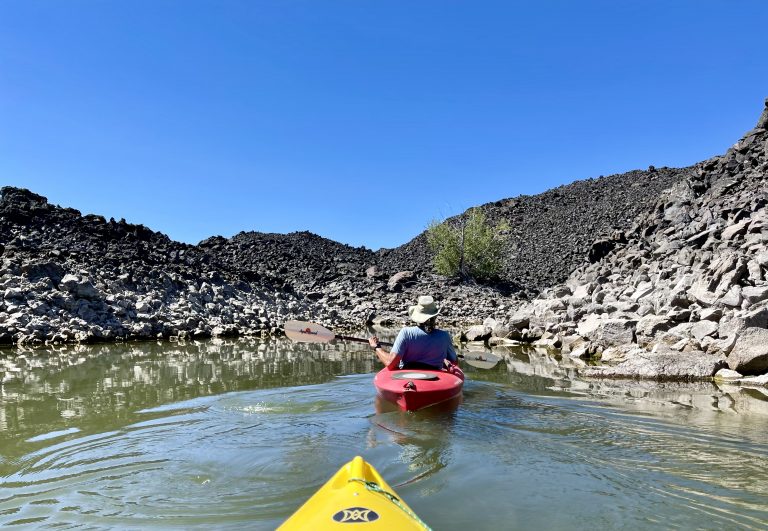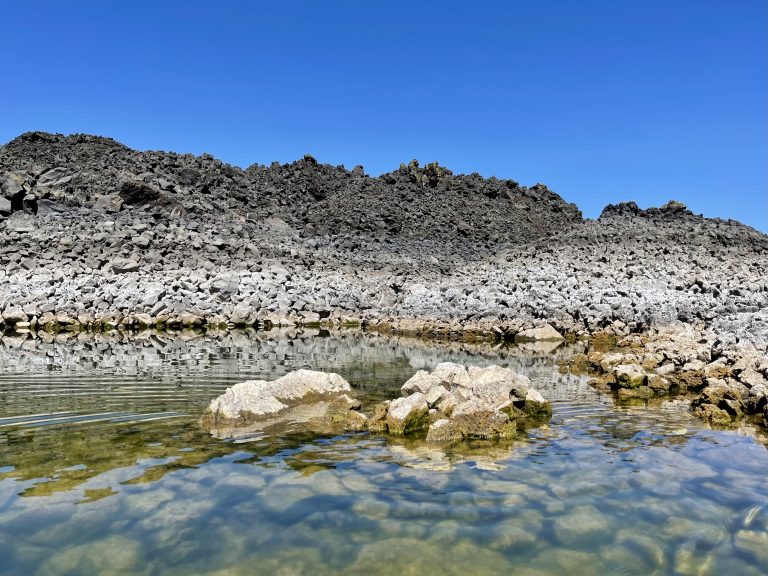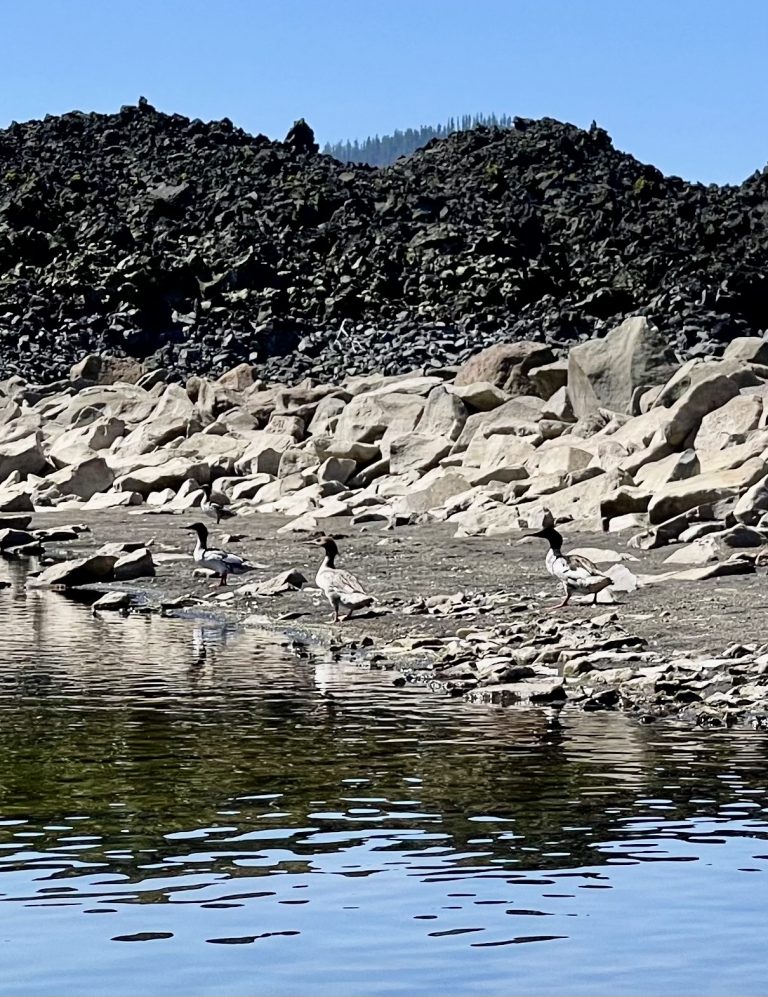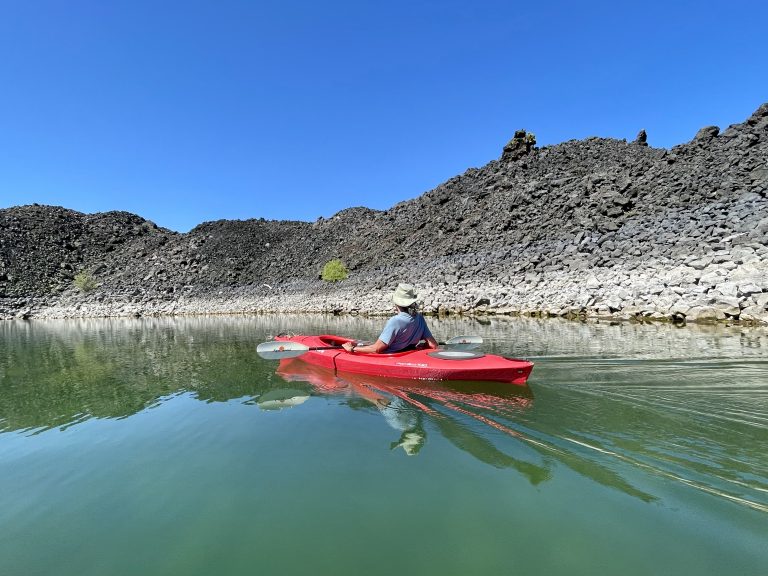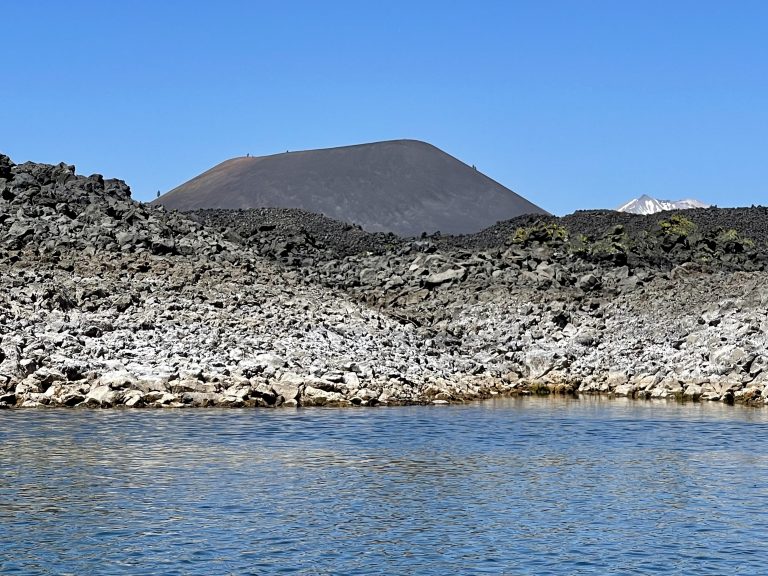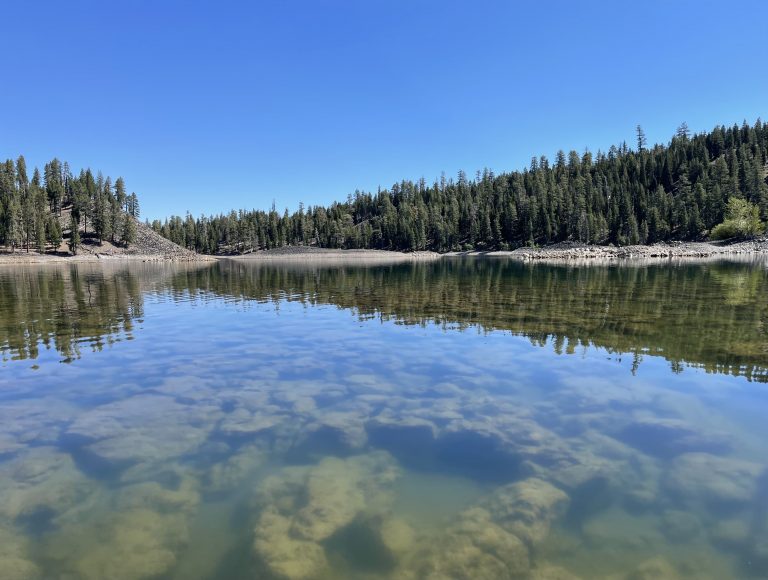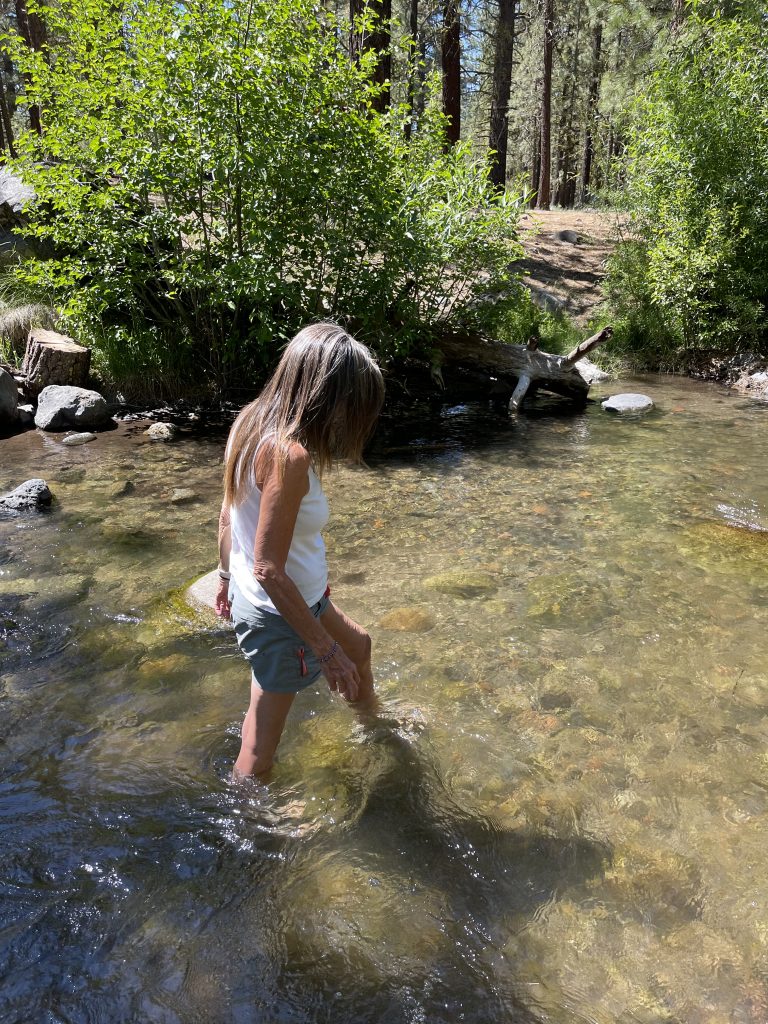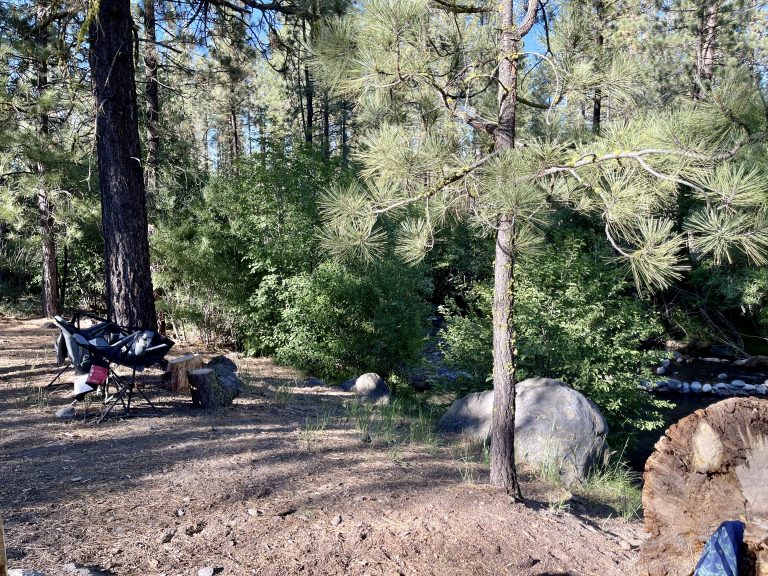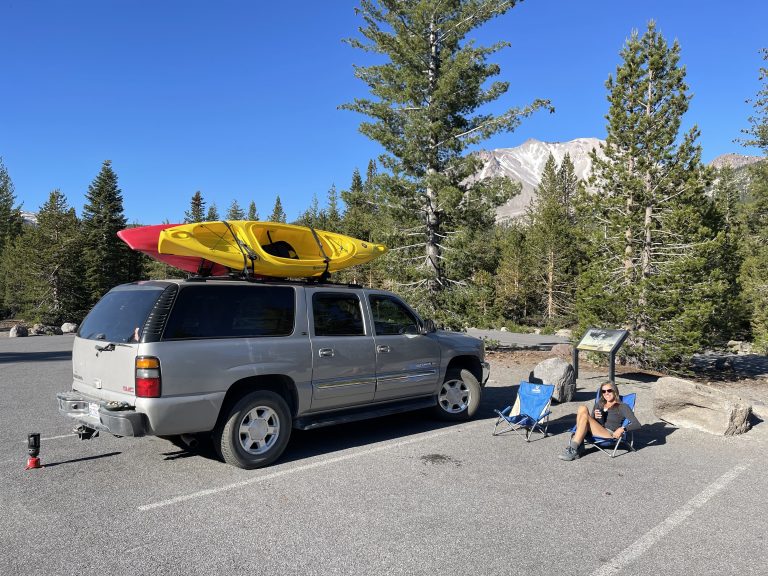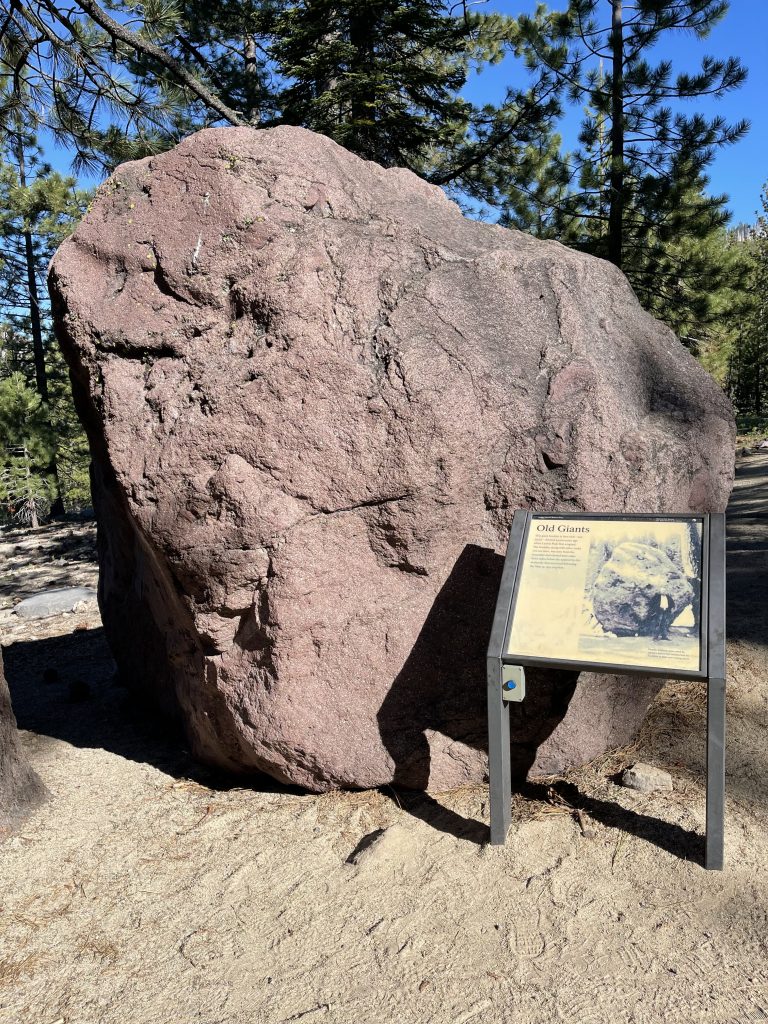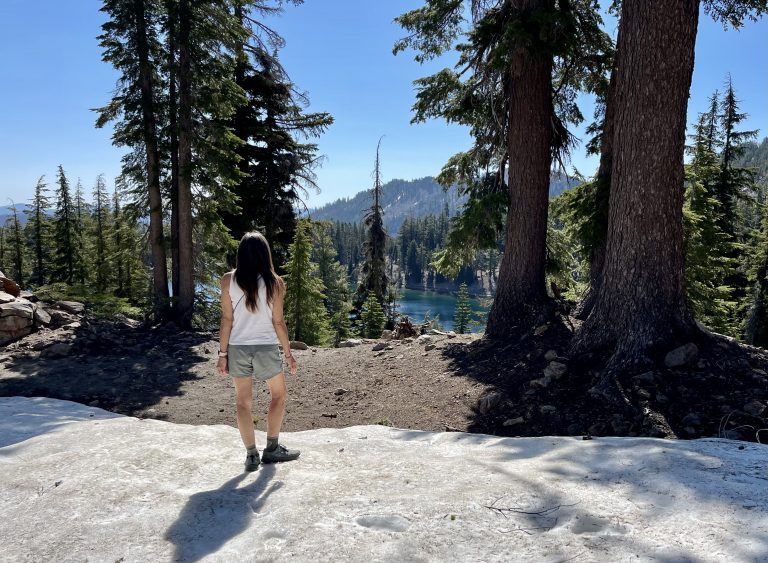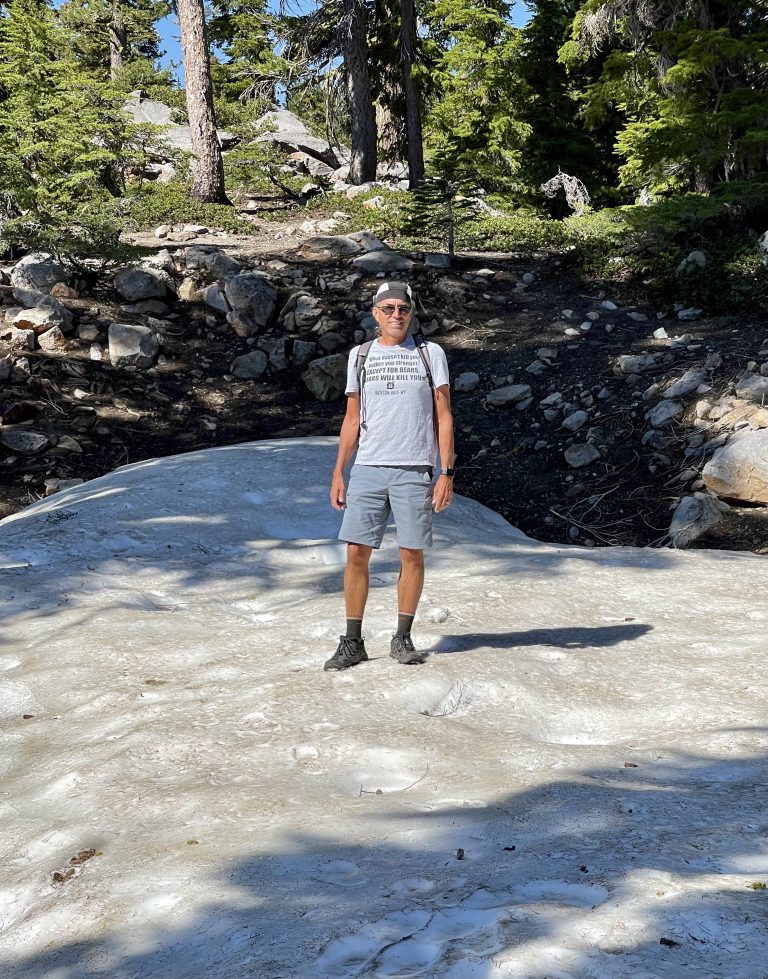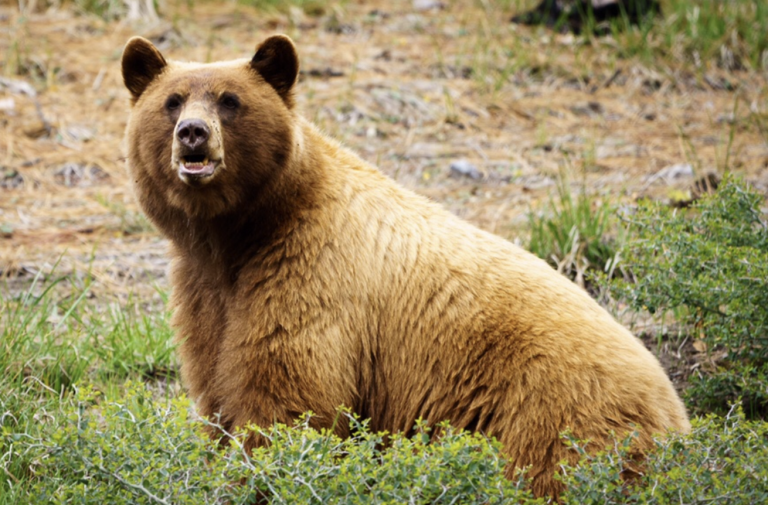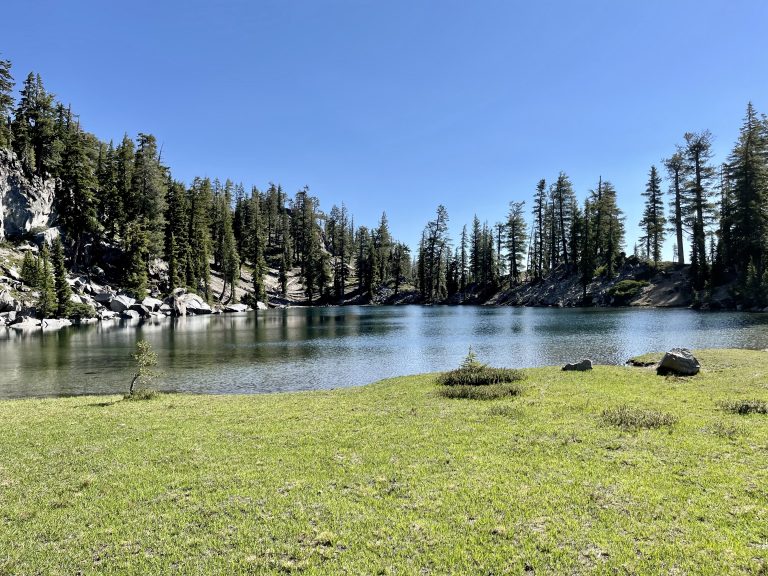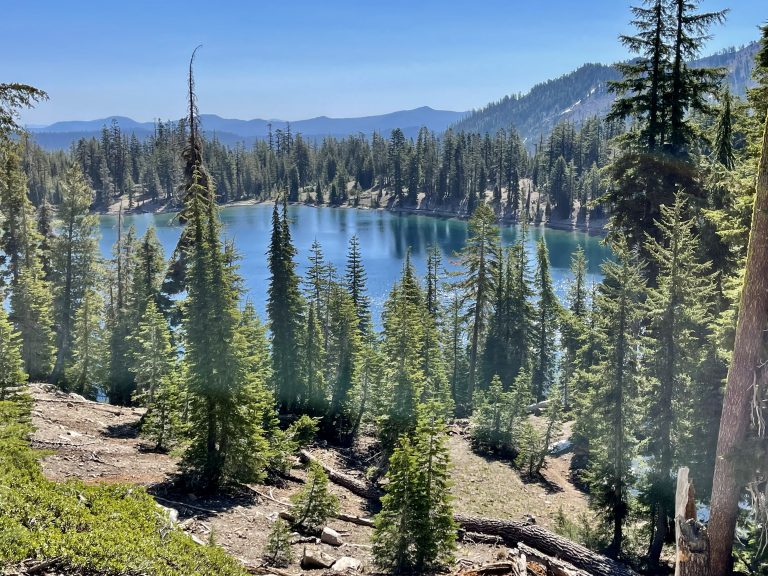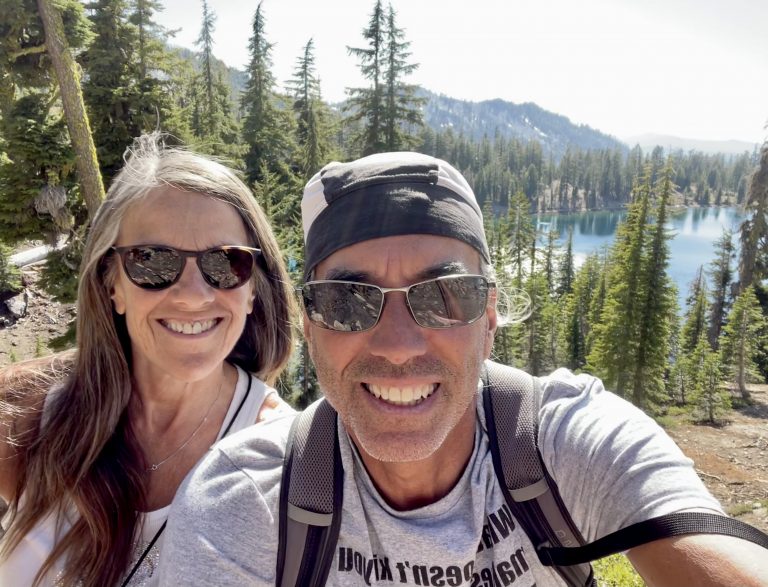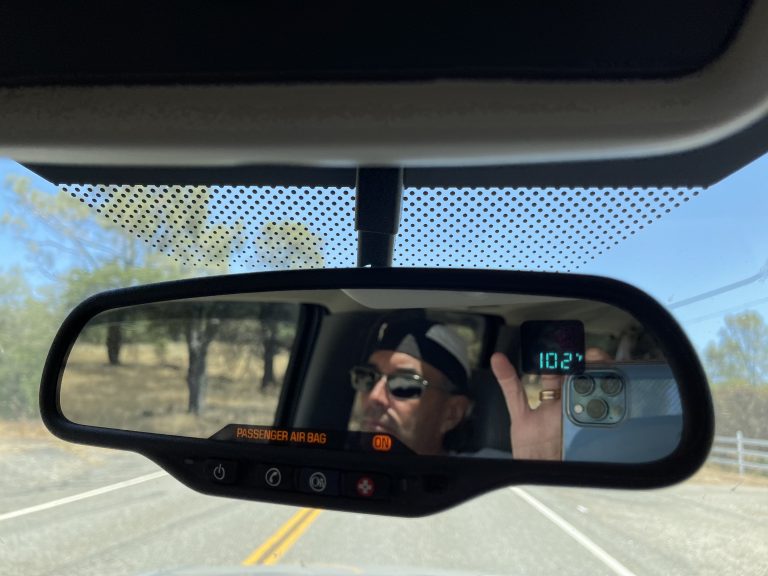June 18-19, 2021
This is our 100th blog post, which finds us, ironically, at Lassen Volcanic National Park only a couple of hours from home after sharing our adventures from thousands of miles of travel. We began this blog just before the world changed because of the pandemic. Our first posts detailed our travels to Baja Mexico, just as things were starting to look bad in February of 2020. When we started this blog, we didn’t know that after Baja our travel experiences would all be domestic ones for at least a year and a half. Covid has caused us to cancel planned trips abroad to Eastern Europe and South America, but we hope to be able to visit those places soon.
We were far too restless to stay home throughout Covid, and quickly found that we could safely quarantine ourselves in the wilderness as we traveled and camped in our SUV. Social distancing was easy. Covid restrictions limited us somewhat but just as often allowed us to have unexpected experiences. There were times the national parks were closed due to Covid, and times the national forests were closed due to wildfires, so we developed expertise in finding Bureau of Land Management (BLM) land where we could camp and explore instead.
We’ve seen changes in the camping experience during Covid, with many more people escaping to the outdoors, many for the first time. We welcome the new adventurers, but many have not yet developed the courtesies that those who’ve done this for a while have figured out. Campgrounds are noisier and dirtier and traffic jams in national parks are much worse, as are dangerous wildlife interactions. Many people who are trying the voyaging lifestyle, whether part time like us or full time Nomadlanders or van-lifers, will likely find it’s not for them after all; we hope to meet some of the few who continue.
Covid is now sort-of over. At least the country has turned the corner, 2/3 of Americans have been vaccinated and nearly all Covid restrictions were recently lifted in California. Our box of 100 disposable masks will probably last through the next pandemic. Life will slowly return to normal for most people and we have plans for lots of new travel experiences. The nature of our travel experiences as the world begins to reopen may change some. Perhaps less camping and more cultural experiences once we begin to travel internationally again. Undoubtedly, we’ll be more social.
But for now, we’re still camping. Last night, the national park campground was quiet and this morning we woke to a leisurely breakfast. It was forecast to be 110 degrees back home during the continuing heat wave but it would be nowhere near as hot here and would cool off quickly at night. For two days we’d been out of cell service but the clear skies told us the forecast at Butte Lake inside Lassen Park would be about 90 degrees but dry and quite pleasant.
We lingered in the fragrant campground before heading out at about 9:30 am. By 10:00 we’d launched the kayaks. Because the lake was several feet low due to the drought, the usual launch area was a field of mud so we had to carry the boats a few hundred feet to find a spot with a mostly cinder bottom.
Butte Lake sits in a basin partly formed during a lava flow a few hundred years ago, when the nearby Cinder Cone was erupting. Forests of ponderosa pines lined much of the lake but half or more of the shore was made up of sharp basketball- to washing machine-sized rocks that had spewed from the ground as lava, near the cone.
We shoved off into the eerie lake not knowing how far we could go due to the low water. Newly exposed islands of jagged rocks showed above the low water while the sun shone and a light wind blew. Unlike most alpine lakes, this one was devoid of much life. A few Canada geese and other large unidentified ducks swam near shore. Hundreds of live bugs floated unafraid on the water, evidence that not even medium-sized fish lived in the lake. Because Butte Creek had already dried up and no new water was able to get into the lake, algae covered most of the barely-submerged rocks, giving the lake an odd greenish hue.
We paddled around several rocky coves and eventually made it to the farthest end of the lake. Around one cove, the giant cinder cone hove into view, with snow-draped Mt Lassen in the background, a strange contrast. Some partial shade along the tree-lined shore showed what the lake must look like without the algae. Small multi-colored rocks lined the shallows, which were made mostly of material ejected from the nearby cone. A feeble wind blew up as we headed back and the intense sun was hot so we dragged our feet in the water as we paddled. It was an eerie experience paddling around the desolate sharp rocks that were only a few hundred years old while the pine forests (which were no older because of the cinder eruption) beckoned ashore.
After loading the boats back onto the truck in the hot sun, we looked at our maps to see where to go next. The various sections of Lassen Park are spread out with multiple entrances and roads that don’t connect to one another. We decided to leave the campground, head out of the park and circle to the north, then west, then southeast, which would eventually lead us back into the to the park along the main road. That road climbs to over 8,000 feet and we knew no heat wave would find us there. We weren’t sure what we’d find or do along the way, or whether we’d explore along the park’s main road before or after finding camping for the night. Instead, we just let the afternoon unfold.
About an hour later, we noticed something we hadn’t seen much of during this year’s early drought—a rushing creek! We turned onto a nearby forest service dirt road and within minutes we’d found a beautiful campsite in the tall pines directly next to Hat Creek, a lovely chuckling waterway that invited us to dip into its shallow waters. We instantly decided to stay for the night even though it was only 2:30.
Once we set up camp, we walked into the creek with our sandals on and rejoiced at the coolness. It wasn’t long before we submerged in the cool water, washing off the day’s travel.
Susan found her way onto a comfortable boulder and sat in the rushing creek for awhile. Heat wave? What heat wave? The cool mountain creek was both refreshing and mesmerizing.
After dinner found us sitting in our chairs, lost in thought with the noisy creek a dozen feet in front of us as a cool breeze sprang up.
The next morning, we were in no hurry to leave our pretty campsite but we were also eager to see the higher elevations in the park. In five minutes, we’d broken camp, packed the truck up and pointed it toward the park’s north entrance.
Not long after entering the park again, we found an empty parking lot along the road where we could make breakfast. It was early and too cold to eat at the shady picnic tables, so we made coffee and had cereal in the parking lot, sitting in our camp chairs in the sun while the park woke up. Hardly anyone was there yet and it felt like we had the park to ourselves. There’s something very special about getting in to a national park before the people wake up at the campgrounds or the crowds drive in from the nearby cities.
Back in the truck, we headed up the park’s main road that dissects it and brings travelers out to the southern entrance. The road climbed and the air got cooler. We pulled over after seeing a sign for a trail that led to two small lakes. There were no other cars at the trailhead so we looked forward to a serene hike.
At one point just as the first lake came into view I thought I heard my stomach growl. At the same instant, Susan hollered bear! It wasn’t my stomach, but a grunt from a very large black bear (though this one was more brown-colored). We knew there were no grizzly bears in the park but even black bears can be cranky. He ambled off into the trees by the lake and we waited a few minutes before continuing down the trail that would lead to exactly where he had been.
We saw no more of the bear but the first little alpine lake was gorgeous, with a light breeze ruffling the surface and steep hills of pines and fir behind it.
Farther along the trail, we could see the other larger lake through the trees, but we’d had enough of descending and headed back up the hill, talking loudly (and Charles singing off key) so as not to surprise the bear in case he was still hanging around.
We’d escaped the worst of the heatwave in the naturally air conditioned and scented northern California mountains and it was time to head for home. We returned along a couple of two-lane roads that took us along canyons with creeks at the bottom, the roads twisty and scenic but now filling with weekend travelers.
Thank you, readers, for visiting or following our blog over the past year and a half. We’re excited about our 100th-post milestone but even more excited about the adventures ahead and the next 100 posts!

